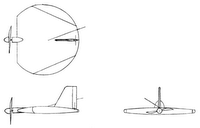 Much has been made lately about the latent housing potential of shipping containers. But according to Chris Johnson, an Australian architect and curator of the Houses of the Future exhibit at Sydney Olympic Park, container-based homes are only one step in a larger global trend toward alternative modular housing systems. "Companies such as Ikea and Toyota are moving into housing and the question is whether people putting brick on brick is, in the early 21st century, the most efficient way to build housing," says Johnson in a 2005 interview with the Sydney Morning Herald. Take, for example, the Ikea BoKlok, an entire house that comes in the same kind of "flat-pack" packaging as that desk you bought back in college:
Much has been made lately about the latent housing potential of shipping containers. But according to Chris Johnson, an Australian architect and curator of the Houses of the Future exhibit at Sydney Olympic Park, container-based homes are only one step in a larger global trend toward alternative modular housing systems. "Companies such as Ikea and Toyota are moving into housing and the question is whether people putting brick on brick is, in the early 21st century, the most efficient way to build housing," says Johnson in a 2005 interview with the Sydney Morning Herald. Take, for example, the Ikea BoKlok, an entire house that comes in the same kind of "flat-pack" packaging as that desk you bought back in college:From this spring, if an Anglo-Swedish project takes off, it will be possible to buy an entire home from the furnishing superstore Ikea with the option - though this would be the hard part - of following the flatpack instructions and assembling it yourself.With these and similar projects taking hold in countries throughout Europe and North America, the mid-90s projects of maverick design group Atelier van Lieshout seem more prescient than ever. Now if only Ikea could find a way to put property into a cardboard box, we'd be set...Shoppers familiar with the unique Ikea system may blanch at the prospect, but the store is preparing the package to sell to customers with incomes as modest as £15,000. Provided they are handy with Allen keys, Phillips screwdrivers and pliers, they will have a simple open-plan, one-bedroom apartment plus a voucher, probably for £250, to buy a "start package" of Ikea furniture...
The homes were invented in 1997 in response to similar housing problems in Sweden, where Ikea shaved the basic cost of a home in the way it has done for humbler objects like the Jerker cupboard and Gassbo stool. Costly but "unnecessary" house details were cut out after an exhaustive survey of what young house-hunters considered essential, as opposed to ideal.
The BoKloks will available over the counter at Ikea's 13 British stores if all goes well, with between three and seven blocks of six per site, plus communal gardens and car parking. The package may also include advice and support in setting up a new home, a personal shopper, mortgage and insurance discounts and a year's interest-free loans on large purchases of items like the Plutt and Gorm. (The Guardian)








